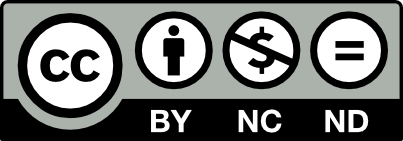This page is licensed under Creative Commons under Attribution 4.0 International. Anyone can share content from this page, with attribution and link to College MatchPoint requested.
The Unsung Hero of Your College Application: Understanding the High School Profile
When families think about the college admissions process, the focus often falls on the big-ticket items—GPA, test scores, essays, and extracurriculars. But there’s one document that quietly shapes how colleges read every application: the high school profile.
It’s not something students write. It’s not something parents typically see. And yet, it might be the most important context-setting piece of the entire college file.
At a time when admissions have never been more competitive—and when holistic review is being more carefully scrutinized—the school profile plays a crucial role in ensuring your student is evaluated fairly. It is, in every sense, the unsung hero of the application.

What Is a High School Profile?
A high school profile is a short, structured document—usually 2–4 pages—created by the counseling office and submitted to every college alongside a student’s transcript.
While the transcript shows what a student has done (grades, courses), the school profile explains where they did it:
- What advanced courses were available?
- How does the school calculate GPA?
- Is class rank reported?
- What are typical college outcomes for students from this school?
With more than 25,000 high schools in the U.S., admissions officers can't possibly be familiar with them all. The school profile helps admissions teams interpret student achievement in context—not just against other applicants, but against what was possible in a student’s learning environment.
What Does a School Profile Include?
A strong school profile isn’t just a technical document—it’s the lens through which college admissions officers view everything on a student’s transcript. Done well, it brings essential clarity. Done poorly—or not at all—it can unintentionally obscure a student’s accomplishments.
While formats vary by school, most robust profiles include four critical categories of information: academic curriculum, grading and ranking policies, postsecondary outcomes, and community context. Here’s a deeper dive into what each of these sections should include—and why they matter.
1. Academic Curriculum
This section explains what academic opportunities were available at the school. Admissions officers want to know not only what a student chose to take, but also what was offered in the first place.
A well-developed academic curriculum section includes:
- Course Listings: A comprehensive list of all courses offered by subject area, particularly advanced coursework like Honors, AP, IB, AICE, and Dual Credit classes.
- Advanced Course Availability: Number and type of AP/IB classes available. For instance, does the school offer AP Calculus, AP Biology, or AP Literature? Or just one or two APs total? The difference is crucial.
- Course Limitations: A note on whether certain advanced classes are restricted by grade level, GPA, or application. If upper-level science courses are only offered to seniors, that informs how colleges view a student who took them as a junior.
- Graduation Requirements: A breakdown of how many years or credits are required in each academic subject to graduate (e.g., 4 years of English, 3 years of math, etc.).
- Curricular Philosophy: Some private or independent schools don’t follow the AP/IB model and instead offer their own rigorous curriculum. In these cases, the school profile should include a short explanation of how those courses are designed and how rigor is assessed.
🟡 Why it matters: Colleges want to know whether a student pursued a challenging course load relative to what was available. A student who takes all the available APs at a small rural school may be showing more academic initiative than one who takes half of the options at a school with a broader selection.
2. Grading and Ranking Policies
Grades can only be interpreted accurately when colleges understand how they were calculated. This section of the profile gives admissions teams the tools they need to assess academic performance fairly.
A comprehensive grading section will include:
- GPA Scale: Is the GPA weighted or unweighted? Does the school use a 4.0 scale, 5.0 scale, or something else entirely? Some schools use letter grades, others use numeric grades or percentages.
- Weighting System: If weighted grades are used, how are they calculated? For example, does an A in an AP course earn a 5.0 or a 4.5? Is there a cap on how much weight is added?
- Class Rank Policy: Does the school rank students? If not, does it provide general percentile information (top 10%, 25%, etc.)? Is the rank weighted or unweighted? Voluntary or automatic?
- Grade Distribution Charts: Ideally, the profile includes GPA ranges for the top quartile, median, and bottom quartile of the class. This helps colleges interpret whether a GPA is high or average within the student’s context.
- Grade Inflation or Deflation Notes: Some schools explicitly state their approach to grading. A profile might mention if an A is rare, or if the majority of students earn above a 3.5.
🟡 Why it matters: A 3.9 GPA from a school where 90% of students earn A’s doesn’t signal the same thing as a 3.9 at a school where A’s are rare. Grade distributions and weighting systems help colleges make accurate, equitable comparisons.
3. Postsecondary Outcomes
This section gives insight into where students from this high school go after graduation—and whether college attendance is the norm.
Key elements include:
- College Matriculation List: A list of colleges and universities where recent graduates have enrolled, usually from the past three years. It should include a mix of public, private, in-state, and out-of-state institutions.
- College-Going Rate: The percentage of the graduating class that goes on to two-year or four-year colleges.
- Military and Workforce Data: If students choose to enlist or enter the workforce directly, that should also be reflected here. Some students attend technical programs, apprenticeships, or gap year experiences.
- Standardized Testing Data: Average SAT and ACT scores (if available), participation rates, and the middle 50% range. Even in test-optional environments, this data can help contextualize a student’s individual score.
🟡 Why it matters: If a student from a school with limited college-going culture applies to highly selective institutions, it may indicate extraordinary initiative or drive. Admissions officers need this context to appreciate those differences.
4. School and Community Context
This section helps colleges understand the broader environment in which a student has lived and learned. It highlights systemic factors that might shape access to opportunity.
Strong community context includes:
- Total Enrollment: Overall school size and size of the graduating senior class.
- Student Demographics: Racial and ethnic composition, percentage of English language learners, students receiving free or reduced lunch, and percentage of first-generation college students.
- Local Context: Urban, suburban, or rural setting. This can be helpful in understanding access to transportation, extracurriculars, and community resources.
- School Governance: Is the school public, private, charter, or magnet? Does it admit students by neighborhood zoning, selective application, or lottery?
- Special Programs: Any signature programs like STEM academies, International Baccalaureate, research tracks, or career pathways.
🟡 Why it matters: This section helps admissions officers interpret what obstacles or privileges shaped a student’s journey. Two applicants may look similar on paper, but understanding their environments can reveal significant differences in opportunity.
Why It Matters More in 2025 Than Ever Before
This year’s admissions data confirms what many families have suspected:
- Applications are up—over 8 million Common App submissions.
- Early rounds are dominating—many top colleges now fill over half their class in Early Decision.
- Test scores are making a comeback, and public universities are tightening admit rates for out-of-state students.
- And perhaps most significantly: colleges are making major decisions based on a student’s academic alignment with their intended major.
In this hyper-competitive landscape, your student’s transcript alone doesn’t tell the whole story. Colleges want to know: Did this student challenge themselves with the opportunities they had? That’s where the school profile steps in.


